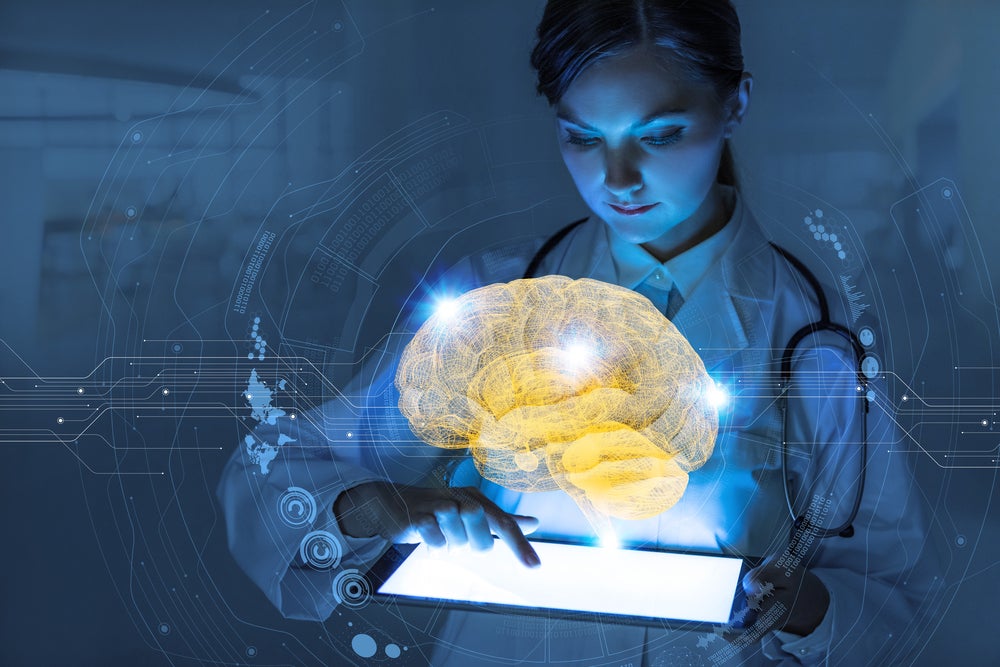
In healthcare settings, digital technology – artificial intelligence (AI) especially – is becoming more prevalent.
According to a report by GlobalData, global revenue for AI platforms across healthcare will reach $4.3bn by 2024. The CAGR between 2019 and 2024 will be 24.6% and 20.6% in healthcare and medical devices respectively.
In the field of stroke management, digital health company Methinks has received a CE mark for an AI-based medical imaging software that can aid detection and management of Acute Stroke (AS).
The Methinks Stroke Software suite is the first CE marked medical device able to identify both hyperdense and non-hyperdense large vessel occlusions (LVO) from non-contrast computed tomography (NCCT) and computed tomography angiography (CTA).
LVOs are obstructed cerebral arteries and account for 30% of acute ischemic strokes (AIS) – of which there are 7.6 million per year globally.
The software also has applications in suspected brain bleed cases – it can detect intracerebral hemorrhages (ICH) on NCCT images.
How well do you really know your competitors?
Access the most comprehensive Company Profiles on the market, powered by GlobalData. Save hours of research. Gain competitive edge.

Thank you!
Your download email will arrive shortly
Not ready to buy yet? Download a free sample
We are confident about the unique quality of our Company Profiles. However, we want you to make the most beneficial decision for your business, so we offer a free sample that you can download by submitting the below form
By GlobalData“We are reducing time to treatment and therefore improving patient outcome and reducing costs,” said Pau Rodriquez, CEO of Methinks, speaking to Medical Device Network.
Detecting early clues in strokes is crucial to clinical outcomes. Paralysis (and reduced motor control), with the resulting need for rehabilitation, are reduced. Almost two-thirds of stroke survivors leave hospital with a disability, according to Brain Research UK.
“AI in triaging is something that the UK’s NHS originally started using 10 years ago in its virtual wards to monitor patients – their data was calculating which patients were most likely at risk of emergency care,” says Shabnam Pervez, Analyst at GlobalData.
“This tool can enable more treatments to be done – the potential for endovascular treatments is huge,” said Rodriquez.
The Class 2b device has installations across several hospitals in Europe with retrospective validation in 3,779 patient stroke suspicion cases. The Barcelona, Spain-based company also has a prospective study in the US.
Digital diagnosis is an area that has seen much development, but Rodriquez is clear that this Methinks Stroke Suite is purely an aid tool that will complement existing frameworks.
“This doesn’t substitute the radiologist; this simply flags that there is a suspected stroke.”
Methinks has several pipeline products that will be centred around stroke management. These are all aimed at streamlining health pathways by providing more information around stroke triggers. This will potentially make stroke detection quicker and more accessible in clinical settings.
“We don’t want to focus on advanced medical imaging but rather how we can turn the smaller hospitals in the world to have capabilities of better tools for stroke assessment.”
The CE mark certification follows a $15.6m venture financing deal completed by the company in 2022.
Already at market, and FDA-approved, is RapidAI’s software – which, through similar identification of LVOs, aids stroke management.
GlobalData estimates that the number of procedures to remove clots from blood vessels is growing at a CAGR of 10–15%. This is in part due to more sophisticated resources – software from Methinks and RapidAI will accelerate this market growth.
“AI is already being widely used in data management, remote surgery, diagnostic and procedural AI assistants, drug discovery, and clinical trial design in the life sciences space. Data, however, can sometimes lead to inaccuracies,” says Pervez.



